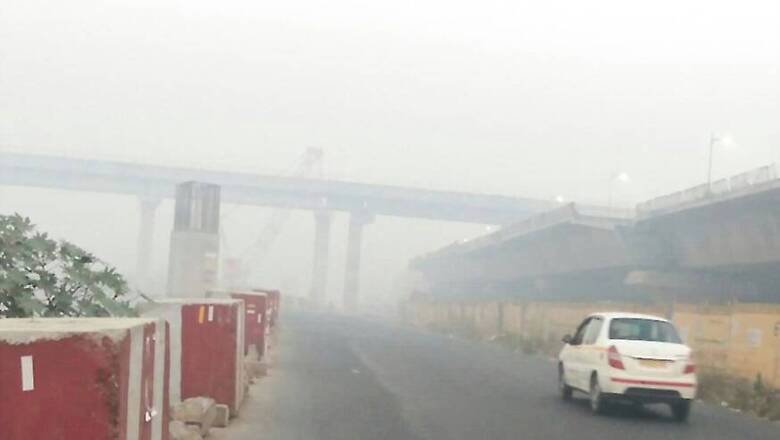
views
New Delhi: The level of emissions from fireworks fell by around 40 per cent during Diwali festivities this time as compared to 2016, according to the findings of a study which assume importance in the light of a region-wide ban on the sale of firecrackers by the Supreme Court.
The SAFAR study concluded that, as a whole, the Diwali period (October 18-22) was the cleanest since 2014. Level of particulates did shoot up a day after Diwali, but the dispersion was quicker and air quality attained the pre-Diwali level within three days.
SAFAR, a central government air quality monitoring agency, based its findings on a detailed study of air quality, sources of emissions and meteorological conditions which prevailed in the national capital during this period.
As compared to emissions from fireworks in 2016, the dip was significant: 50 per cent on October 19, the Diwali night; 25 per cent on October 20, when pollution peaked and 45 per cent on October 21, SAFAR (System of Air Quality and Weather Forecasting And Research) said in its report.
But if less firecrackers were burnt, what explains the fact that air quality turned "severe" for the first time in 2017, a day after Diwali? The amount of PM2.5, an ultrafine particulate measuring less than 20 times the width of a human hair, recorded by SAFAR during the period went like this: October 18 - 136, October 19 - 174, October 20 - 407, October 21 - 203 and October 22 - 139 micrograms per cubic metre (ug/m3). The 24- hour safe standard is 60 (ug/m3).
SAFAR project director Gufran Beig explained that reduction in emissions from a particular source and reduction in levels of pollution are not linearly related or directly proportional.
He said that "incredible" amount of fireworks, despite the relative reduction, on Diwali night led to trapping of smoke in the air and a rapid build-up of pollutants, especially between midnight and 4 am on October 20, aided by a fall in temperature and lowering of mixing height (where air and suspended particulates mix).
"Emissions slow down local wind movement as air becomes heavy. It's like the heaviness in air one feels in a room when the number of occupants go up, say from five to 20. But subsequently, the air cleaned up faster this time due to warmer temperature and dry conditions.”
"The ban on crackers certainly had an impact. The days that preceded and followed Diwali saw restraint from people. Usually, crackers are set off before and after the actual night of festivities as well. The real impact could be seen on October 20," Beig told PTI.
He said the post-Diwali air had also been good as compared to last year as the smoke from stubble burning regions in Punjab and Haryana had not reached Delhi because of the wind direction, which was not the case last year resulting in the worst smog episode that the city witnessed in nearly two decades.
External contributions, such as stubble burning, did not exceed 10 per cent of the total pollution load during this period, the SAFAR report said.
The study factored in the observed meteorological data including wind speed, wind direction, satellite estimate of stubble burning emissions among other factors, it said.



















Comments
0 comment